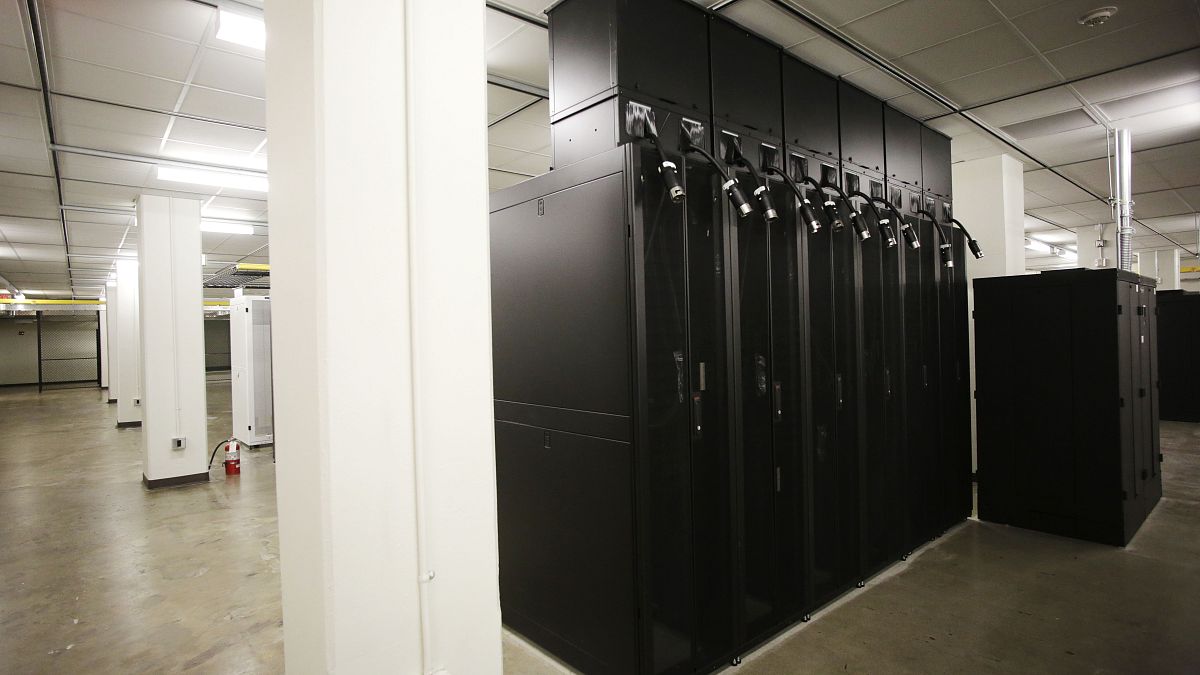London, Paris and Frankfurt are Europe’s data centre hubs. But energy-intensive data centres are causing concern for the EU.
As Europe’s artificial intelligence (AI) ambitions grow, so does the rapid expanse of data centres and the fossil fuels needed to power them.
Europe’s market saw a 168 per cent increase in data centre investment compared to the same period last year, according to new research released on Wednesday by the London-based global real estate consultancy Knight Frank.
The report found that Europe’s leading cities for data hubs were London, Paris, and Frankfurt.
London got a fresh investment from Amazon’s cloud computing division AWS on Wednesday, which announced a plan to invest £8 billion (€9.5 billion) over the next five years to build and operate data centres in the United Kingdom.
Meanwhile, Microsoft announced in May that it was investing €4 billion in French data centres and AI training, and Amazon announced the same month it would invest €15.7 billion to expand its data centres in the northeastern region of Aragon in Spain.
Data centres are the physical facility that houses an organisation’s computer systems and high volumes of data, which can be retrieved anywhere in the world. They have become increasingly important for generative AI as many models need a large amount of energy which data centres can provide.
But they do not just require a lot of energy to run, which mainly comes from fossil fuels, they also need energy to stay cool.
By 2026, data centres around the world could be using a total of 1,000 terawatt-hours annually, the International Energy Agency (IEA) estimates, adding that this is roughly equivalent to the electricity consumption of Japan.
The IEA states in its 2024 report that of the 8,000 data centres in the world, a third are in the United States and 16 per cent are in Europe.
The European Union can expect data centre electricity consumption to rise from just under 100 terawatt-hours in 2022 to almost 150 terawatt-hour by 2026, the IEA said.
"Across Europe and over the course of the next 12 months, we are anticipating a monumental wave of next-generation AI demand albeit supply will be tempered given the dearth of available high voltage power,” Stephen Beard, global head of data centres development and investment at Knight Frank, said in a statement.
“The winners will be those that are able to utilise alternative power solutions with earlier demand-only connection dates," he added.
Alternative energy solutions
Several tech companies say they are working on alternative energy solutions for data centres.
Google said machine learning from its AI lab DeepMind was used on its data centres which reduced the amount of energy it used for cooling by 40 per cent.
Meanwhile, NVIDIA this year rolled out graphics processing units (GPUs), processing cores that are now used for AI, which consume 25 times less energy than earlier models.
But the majority of data centres are still powered by fossil fuels.
In March, the European Commission adopted an EU-wide scheme to rate the sustainability of data centres. It means that this month, data centres will have to file reports detailing their energy and water consumption and the steps they are taking to reduce it.
The EU estimated that by 2039 data centres in the bloc will consume more than 3 per cent of all energy used in the EU if the development continues at the current trajectory.















